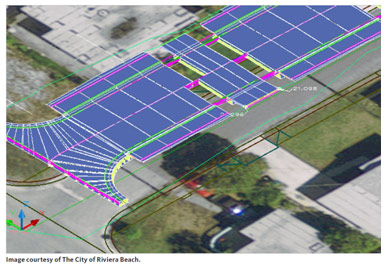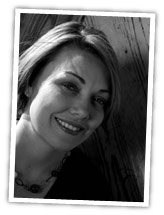Riviera Beach Cuts Costs, Increases Efficiency with Civil 3D
In Palm Beach County, Fla., the city of Riviera Beach is a growing harbor city with a population of 35,000.  The city’s Department of Community Development, which is responsible for planning and zoning, building and engineering, has worked for several years to perform annual roadway restoration or reconstruction projects in an economically depressed part of town, aiming to improve property values and develop a new sense of community for the residents. The department has undertaken these roadway projects with the help of funds from federal Community Development Block Grants, and until recently, it has been forced to outsource much of the design work to consultants. But in 2007, the city adopted AutoCAD Civil 3D software, which has allowed it to take the work in-house, cutting costs and allocating internal resources more effectively.
Before Riviera Beach adopted Civil 3D software, the city faced several challenges:
The city’s Department of Community Development, which is responsible for planning and zoning, building and engineering, has worked for several years to perform annual roadway restoration or reconstruction projects in an economically depressed part of town, aiming to improve property values and develop a new sense of community for the residents. The department has undertaken these roadway projects with the help of funds from federal Community Development Block Grants, and until recently, it has been forced to outsource much of the design work to consultants. But in 2007, the city adopted AutoCAD Civil 3D software, which has allowed it to take the work in-house, cutting costs and allocating internal resources more effectively.
Before Riviera Beach adopted Civil 3D software, the city faced several challenges:
 Nancy Mann Jackson is a freelance journalist who writes regularly about local government and sustainability issues. Learn more about her at www.nancyjackson.com.
Nancy Mann Jackson is a freelance journalist who writes regularly about local government and sustainability issues. Learn more about her at www.nancyjackson.com.
 The city’s Department of Community Development, which is responsible for planning and zoning, building and engineering, has worked for several years to perform annual roadway restoration or reconstruction projects in an economically depressed part of town, aiming to improve property values and develop a new sense of community for the residents. The department has undertaken these roadway projects with the help of funds from federal Community Development Block Grants, and until recently, it has been forced to outsource much of the design work to consultants. But in 2007, the city adopted AutoCAD Civil 3D software, which has allowed it to take the work in-house, cutting costs and allocating internal resources more effectively.
Before Riviera Beach adopted Civil 3D software, the city faced several challenges:
The city’s Department of Community Development, which is responsible for planning and zoning, building and engineering, has worked for several years to perform annual roadway restoration or reconstruction projects in an economically depressed part of town, aiming to improve property values and develop a new sense of community for the residents. The department has undertaken these roadway projects with the help of funds from federal Community Development Block Grants, and until recently, it has been forced to outsource much of the design work to consultants. But in 2007, the city adopted AutoCAD Civil 3D software, which has allowed it to take the work in-house, cutting costs and allocating internal resources more effectively.
Before Riviera Beach adopted Civil 3D software, the city faced several challenges:
- Work overload. Two employees within the city’s engineering division were often required to manage as many as nine capital improvement projects simultaneously. “Under those circumstances, finding the time to perform design work can be very challenging,” says Ricardo Wiswell, an engineering technician within the Department of Community Development.
- Increased costs. Hiring outside consultants helped relieve the burden on the city engineers, it could cost as much as $35,000 per project.
- Unnecessary complexity. Working with consultants also made some projects more complex than necessary, as it was difficult to coordinate between the consultants and the many city departments. In this design environment, change orders during construction were common, each requiring time-consuming review and approval by the County. “A single change order could delay a project for two weeks or more,” Wiswell says.
 Nancy Mann Jackson is a freelance journalist who writes regularly about local government and sustainability issues. Learn more about her at www.nancyjackson.com.
Nancy Mann Jackson is a freelance journalist who writes regularly about local government and sustainability issues. Learn more about her at www.nancyjackson.com. 















































